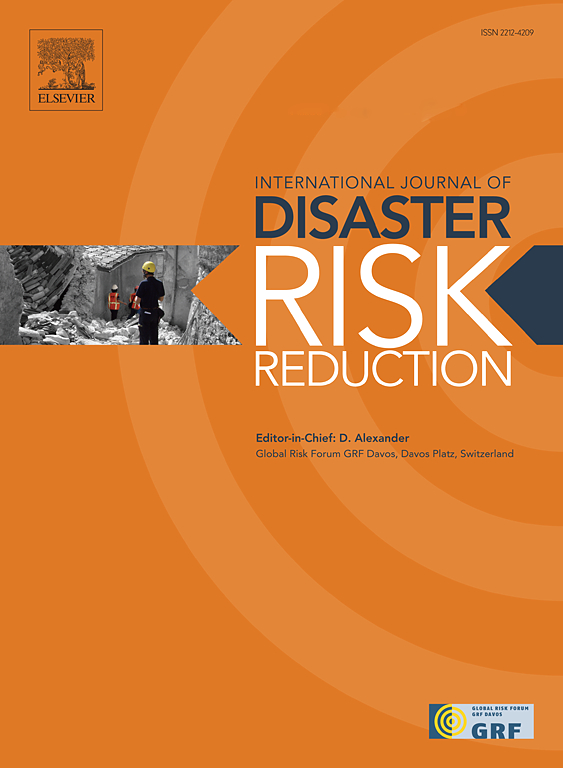From policy implementation to public perception: A dual approach to assessing disaster recovery success in the Wenchuan and Bam earthquake recovery projects
IF 4.2
1区 地球科学
Q1 GEOSCIENCES, MULTIDISCIPLINARY
International journal of disaster risk reduction
Pub Date : 2025-02-01
DOI:10.1016/j.ijdrr.2024.105162
引用次数: 0
Abstract
The present approaches for disaster recovery assessment most often solely concentrate on the tangible outcomes officially documented by local authorities. Therefore, they face shortcomings in addressing impacted populations' complex experiences and perspectives. Top-down disaster recovery evaluation methods emphasize macro-level variables, including infrastructure restoration and economic revitalization. Conversely, bottom-up evaluation methodologies emphasize community-level perceptions, including recovery assessment, residents' emotional well-being, and satisfaction. By integrating top-down and bottom-up disaster recovery assessment methods, this study seeks to close this knowledge gap and provide a more comprehensive understanding of the disaster recovery assessment approaches that followed the 2008 Wenchuan and 2003 Bam earthquakes in China and Iran. This study found that while Wenchuan's recovery benefited from a more structured and comprehensive approach, insufficient public involvement presented significant challenges. In contrast, Bam's reliance on community participation underscored the significance of meticulous planning and accountability in attaining long-term recovery success. Temporal recovery trends over reconstruction years in Wenchuan revealed that recovery trends varied throughout the region. The local government's main priority was rehabilitating the built environment and infrastructure. However, the public regarded social and economic recovery as more important factors for a successful recovery after a disaster. Thus, it is imperative to prioritize comprehensive planning to balance long-term social and economic development strategies and immediate infrastructure needs. Integrating top-down and bottom-up approaches allows policy-makers and local stakeholders to understand better the relationships between macro-level recovery trends and micro-level recovery perceptions. This way, disaster recovery projects may expect fostered recovery plans that sustainably meet both parties' needs.
求助全文
约1分钟内获得全文
求助全文
来源期刊

International journal of disaster risk reduction
GEOSCIENCES, MULTIDISCIPLINARYMETEOROLOGY-METEOROLOGY & ATMOSPHERIC SCIENCES
CiteScore
8.70
自引率
18.00%
发文量
688
审稿时长
79 days
期刊介绍:
The International Journal of Disaster Risk Reduction (IJDRR) is the journal for researchers, policymakers and practitioners across diverse disciplines: earth sciences and their implications; environmental sciences; engineering; urban studies; geography; and the social sciences. IJDRR publishes fundamental and applied research, critical reviews, policy papers and case studies with a particular focus on multi-disciplinary research that aims to reduce the impact of natural, technological, social and intentional disasters. IJDRR stimulates exchange of ideas and knowledge transfer on disaster research, mitigation, adaptation, prevention and risk reduction at all geographical scales: local, national and international.
Key topics:-
-multifaceted disaster and cascading disasters
-the development of disaster risk reduction strategies and techniques
-discussion and development of effective warning and educational systems for risk management at all levels
-disasters associated with climate change
-vulnerability analysis and vulnerability trends
-emerging risks
-resilience against disasters.
The journal particularly encourages papers that approach risk from a multi-disciplinary perspective.
 求助内容:
求助内容: 应助结果提醒方式:
应助结果提醒方式:


